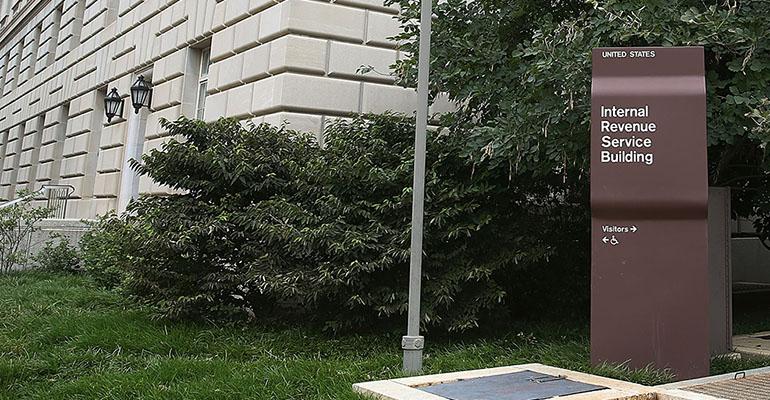In December 2017, as part of the Tax Cuts and Jobs Act, P.L. 115-97 (TCJA), Congress enacted new Internal Revenue Code Section 164(b)(6) limiting individuals’ state and local tax (SALT) deductions to $10,000 per year ($5,000 for married filing separately). (Note that this $10,000 limitation doesn’t apply to real or personal property taxes paid or accrued while carrying on a trade or business or an activity for the production of income described in Internal Revenue Code Section 212.)
Since then, much of the focus has been on the efforts of states and individuals to circumvent this limit. Less attention has been paid to the interplay between this limit and the application of the tax benefit rule, but questions were raised regarding if and when state tax refunds for amounts limited by the $10,000 cap on SALT deductions would be taxable income. On March 29, 2019, the IRS released Revenue Ruling 2019-11, (the ruling), providing four examples of the interplay between IRC Section 111 and Section 164(b) and confirming that a SALT refund will still only be taxable income to the recipient to the extent it actually reduces taxes paid.
Tax Benefit Rule
The tax benefit rule is straightforward, at least on paper: If a taxpayer takes a deduction in one year, but recovers in a subsequent year some or all of the amount that gave rise to the deduction, then that recovery is going to be taxable income to the taxpayer. Section 111 limits the application of the tax benefit rule with respect to certain deductions and credits, including deductions for prior taxes, by excluding from gross income any recovery of an amount that didn’t actually reduce the amount of tax owed in the year of the deduction. Before the TCJA, if a taxpayer itemized deductions on her income tax returns in lieu of taking the standard deduction, claimed a deduction for the full amount of state and local taxes paid and received a refund of some of those taxes after filing her return, then the tax benefit rule would apply to treat some or all of that refund as taxable income. The limitation in Section 111 would keep a portion of the SALT refund from being treated as taxable income if, for example, the total SALT refund was greater than the difference between the taxpayer’s itemized deductions and the applicable standard deduction.
Four Examples
The TCJA didn’t amend Section 111, and taxpayers and practitioners were left wondering how to apply Sections 111 and 164(b)(6) together. The ruling provides clarity by setting forth four examples, all involving a single taxpayer who chooses to itemize deductions on her 2018 federal income tax return in lieu of taking the standard deduction of $12,000. In the first example, for 2018, Anna claimed a SALT deduction of $9,000, had total itemized deductions for 2018 of $14,000 and received a refund of $1,500. Because her SALT deduction wasn’t limited by Section 164(b)(6), if Anna had paid the exact amount of state income tax she owed in 2018, her total itemized deductions would have been reduced by the total amount of the refund. The entire refund is taxable income to Anna in 2019.
In the second example, Barbara paid $12,000 of state and local taxes in 2018, but after application of Section 164(b)(6) she was only able to deduct $10,000. Her total itemized deductions for 2018 were $15,000, and in 2019 she received a state income tax refund of $750 due to her overpayment of state income taxes in 2018. Because the refund is less than the amount by which Barbara’s SALT deduction was limited under Section 164(b)(6), her total itemized deductions wouldn’t have been affected if she had paid the correct amount of taxes in 2018, and no portion of the state income tax refund is taxable in 2019.
In the third example, Charlie paid $11,000 of state and local taxes in 2018, but after application of Section 164(b)(6) she was only able to deduct $10,000. Her total itemized deductions for 2018 were $15,000 and in 2019 she received a state income tax refund of $1,500 due to her overpayment of state income taxes in 2018. Because Charlie’s SALT deduction was reduced by $1,000 under Section 164(b)(6), if she had paid the correct amount of taxes in 2018, her total itemized deductions would have been reduced by $500 if she had paid the correct amount of taxes in 2018, and only $500 of the state income tax refund is taxable in 2019.
In the fourth example, Diana paid $10,250 of state and local taxes in 2018, but after application of Section 164(b)(6) she was only able to deduct $10,000. Her total itemized deductions for 2018 were $12,500, and in 2019 she received a state income tax refund of $1,000 due to her overpayment of state income taxes in 2018. Because Diana’s SALT deduction was reduced by $1,000 under Section 164(b)(6), if she had paid the correct amount of taxes in 2018, her total itemized deductions would have been reduced by $750 to $11,750 if she had paid the correct amount of taxes in 2018. Because that would bring Diana’s itemized deductions below the $12,000 standard deduction, she actually only benefited from $500 of the overpayment, and only $500 of the state income tax refund is taxable in 2019.
Bottom Line
As these examples show, and as the ruling notes, determining whether a SALT refund is includible in a taxpayer’s gross income comes down to whether the taxes that were refunded moved the needle in terms of calculating the taxpayer’s taxable income in a prior year. The SALT refund will be income to the extent the taxpayer’s deductions would have been lower had she just not overpaid her state income tax in the first place. If paying only the right amount of taxes wouldn’t have changed anything on the taxpayer’s federal return, then the SALT refund won’t be taxable income in the year received.





